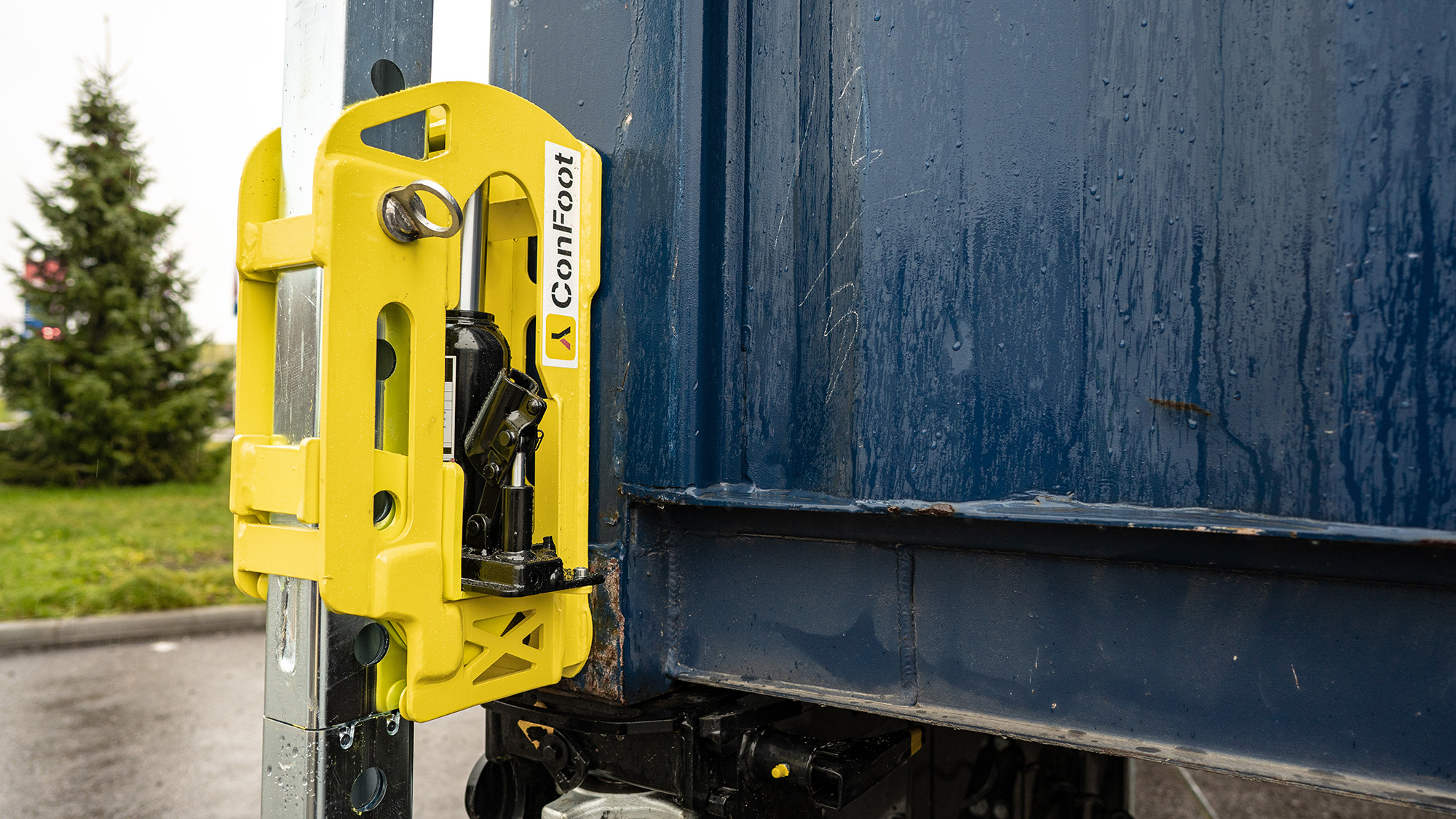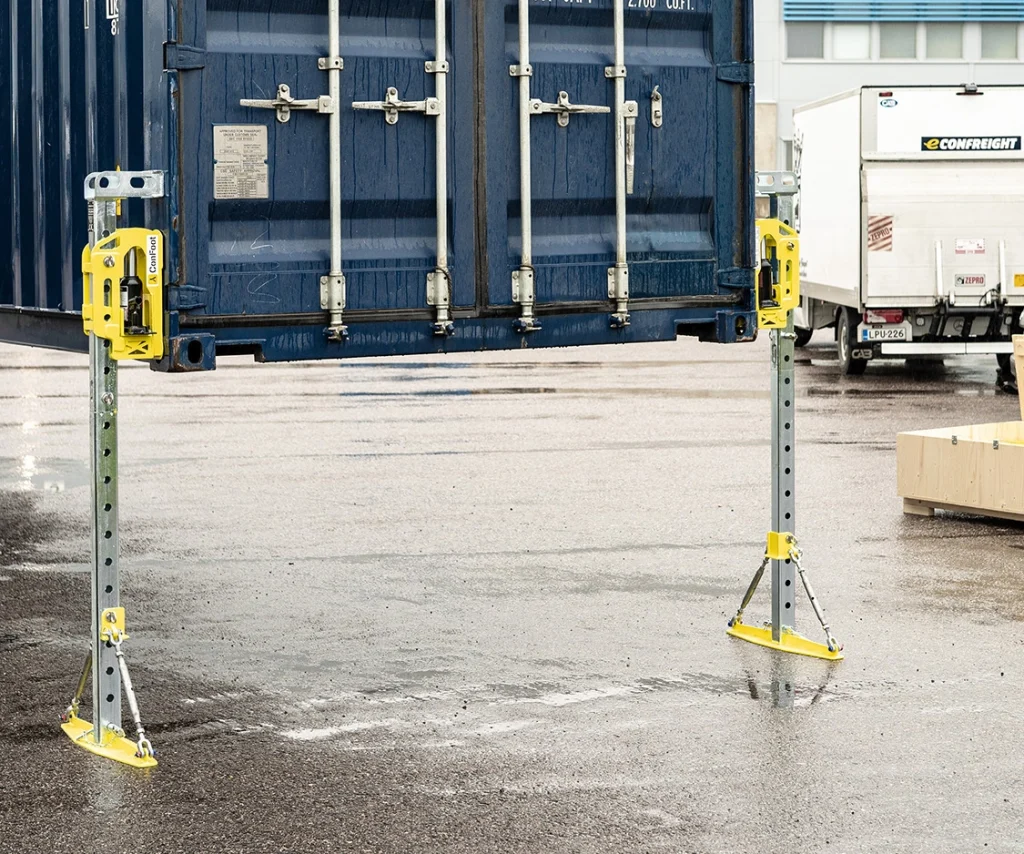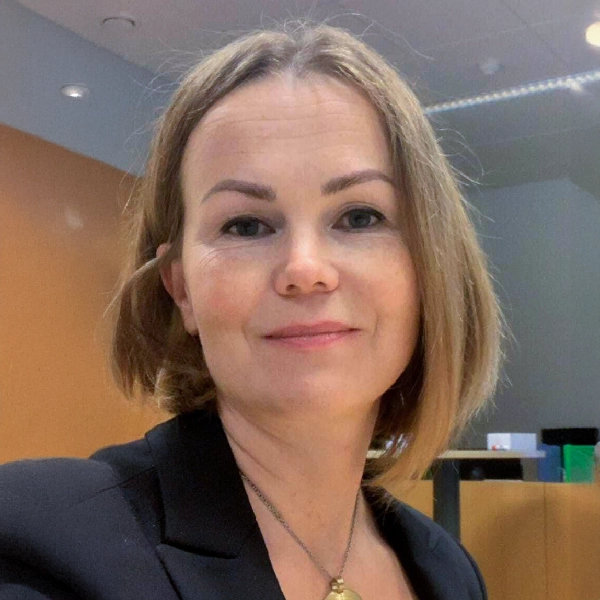Our Story
Contact UsHow Finnish Container Solution Changes Logistics and Spread Around the World
The story of ConFoot started with an everyday challenge faced by a transport entrepreneur who had to deal with the long waiting time for a load to be unloaded. In the worst cases, the driver had to wait until the next day to unload.
Timo Akela, the founder of the company ConFoot, along with Veikko Salminen and Terho Närevaara, set out to solve the problem. They created the vision of a container leg, allowing the container to be left in place and the driver to continue his journey by lorry to the next task. The legs should be lightweight, affordable, durable, and easy to deploy.
Realizing and developing this vision was not straightforward and took a decade of work and cooperation with different actors. Finally, in 2013, a breakthrough was achieved, and a product that met the set criteria was put on the market: a container leg that can be easily handled by one person and safely carries a load of up to 30 tonnes.
Confoot’s story continues after Timo Akela with a strong foundation and a clear vision under the ownership of Mia Pietarinen, Veli-Pekka Niemistö, Lauri Lehtoviita, and Heikki Lehmuskoski. The company has retained the same innovative approach to solving container handling problems, but development and international growth play an even more significant role. The company’s business model has become increasingly flexible, and the dealer network expansion is a key part of the strategy.
CEO Pietarinen emphasizes Confoot’s role as a problem solver, selling products and providing efficient solutions for container logistics in different industries. Today, Confoot’s story continues to be a stable but evolving one:
“While maintaining the vision of our founder, we are taking the company towards broader markets and more innovative solutions.”
ConFoot today
- Legs sold in more than 30 countries
- Innovative Finnish engineering for more than 10 years
- 4 different models that solve many logistical challenges
The whole story
The ConFoot story started with a friend’s call for help. Frustration with time inefficiency and logistical challenges led transport entrepreneur Veikko Salminen to turn to Timo Akela in the early 2000s:
“How could the waiting time for drivers when unloading loads be significantly reduced, and how could handling trailers be made easier?”
Salminen’s company delivered furniture to a network of retailers around Finland, and often, the driver had to wait until the next day to unload trailers standing at loading docks. In addition, turning an empty trailer upside down was cumbersome and time-consuming. Delivering a single load took time, and Salminen became frustrated. At the same time, it occurred to him that his company could not be the only one struggling with the same problem.
Vision that Would Revolutionize Supply Chains
Akela, Salminen, and Terho Närevaara tackled the problem and identified suitable solutions. From the start, it was clear that the solution should be lightweight, affordable, and easy to deploy. This led to the idea of a container leg solution allowing the container to be unloaded from the trailer.
The idea was that the legs would be placed at the corners of the container, and the truck would be lowered down by the air suspension of the trolley, after which the driver could drive the transport truck out from under the container. As the car and driver moved on to the next job, the container would be left in place, waiting to be unloaded. This solution would save resources for the transport company and the recipient of the goods: the driver could deliver several loads in a day, and the recipient would not have to pay for the driver’s waiting time.
The legs would have an overall impact on logistics chains and their efficiency and profitability. While a load is unloaded, the driver can deliver the next load and pick up the empty container on time. With legs, this would also be much smoother—there would be no need to move or turn the container with separate equipment, just the driver driving the truck back under the container.
Demanding Criteria for Development Work
Once Akela, Salminen, and Närevaara had clarified the vision, the development work began. This phase was not easy, as there were many challenges to overcome.
The first criteria were lightness and ease of use, as the legs had to be handled by one person. The second essential criterion was durability and longevity, as the legs had to withstand years of heavy use. In addition to these, cost-effectiveness was another requirement. Akela, Salminen, and Närevaara wanted to make it possible for as many companies as likely to purchase the feet without price being an obstacle.
Reliability and safety were also decisive factors in product development. Legs should not pose safety risks and should meet international safety standards. Finding the right design and developing a material combination that was light and durable enough was not a simple task.

Co-operation Led to a Breakthrough
Akela, Salminen, and Närevaara involved several engineers in product development and collaborated with Helsinki Metropolia University. Ideas and designs were the basis for the prototypes that reached the testing phase.
These first versions were mainly aluminum-based solutions, such as the I-shaped model. After the prototypes were completed, Akela founded ConFoot Ltd. However, the standards were high, and after testing, the prototypes proved to have insufficient characteristics: they were not strong enough, light enough, or durable enough.
It took a decade of development, but a breakthrough was finally achieved in 2013. The research team found an alloy of six different types of Finnish steel from which the final product could be made. The steel alloy allowed the ConFoot legs to have a load capacity of up to 26 tonnes, yet the weight of one leg was only 24 kg.
When the solution was finally found, a patent for the design was applied, and the legs were put on sale. However, ConFoot’s product development did not end there. Together with customers and based on their feedback, the features of the legs were further improved. The design was improved so the legs could be folded, enhancing mobility. In addition, height adjustment was made possible to facilitate the use of the legs further and increase their maximum load capacity to 30 tonnes.

New Owners Strengthen International Markets
ConFoot’s story continues after Timo Akela with a strong foundation and a clear vision under the ownership of Mia Pietarinen, Veli-Pekka Niemistö, Lauri Lehtoviita, and Heikki Lehmuskoski. The company has retained the same innovative approach to solving container handling problems, but development and international growth play an even more significant role.
The company is led by Mia Pietarinen, who focuses on strengthening Confoot’s international position and strategic development. Today, ConFoot is already well-established in the European market, but the new owners emphasize opening up new markets in Africa, America, and the Middle East. The company’s business model has become increasingly flexible, and expanding its dealer network is a key part of the strategy.
Aiming for Growth and Continuous Development Together with the Network
Feedback and ideas from customers and partners have always been central to the ConFoot story, and customer-driven innovation and technological development remain at the heart of ConFoot.
The increase of the CFU legs capacity to 30 tonnes exemplifies of how the company strives to meet its customers’ changing needs. Improving quality and usability are ongoing priorities, and the new owners are investing heavily in product development and optimizing manufacturing processes.
The development work also includes the company’s branding and marketing. The company’s visual identity and marketing communications have been redesigned to support a stronger brand and a growing customer base.
Founder’s Vision is Still Reflected in ConFoot’s Future Direction
ConFoot’s core philosophy—lighter, more efficient, and more flexible container handling—is still at the heart of its operations. The new owners are committed to the company’s long-term development, investing in new technology and strengthening cooperation with a global network of distributors.
Pietarinen underlines ConFoot’s role as a problem solver, selling products and providing efficient solutions for container logistics in different industries. Today, ConFoot’s story continues to be stable but evolving:
“While maintaining the vision of our founder, we are taking the company towards broader markets and more innovative solutions.”
Want to know more about ConFoot?
Get in Touch
